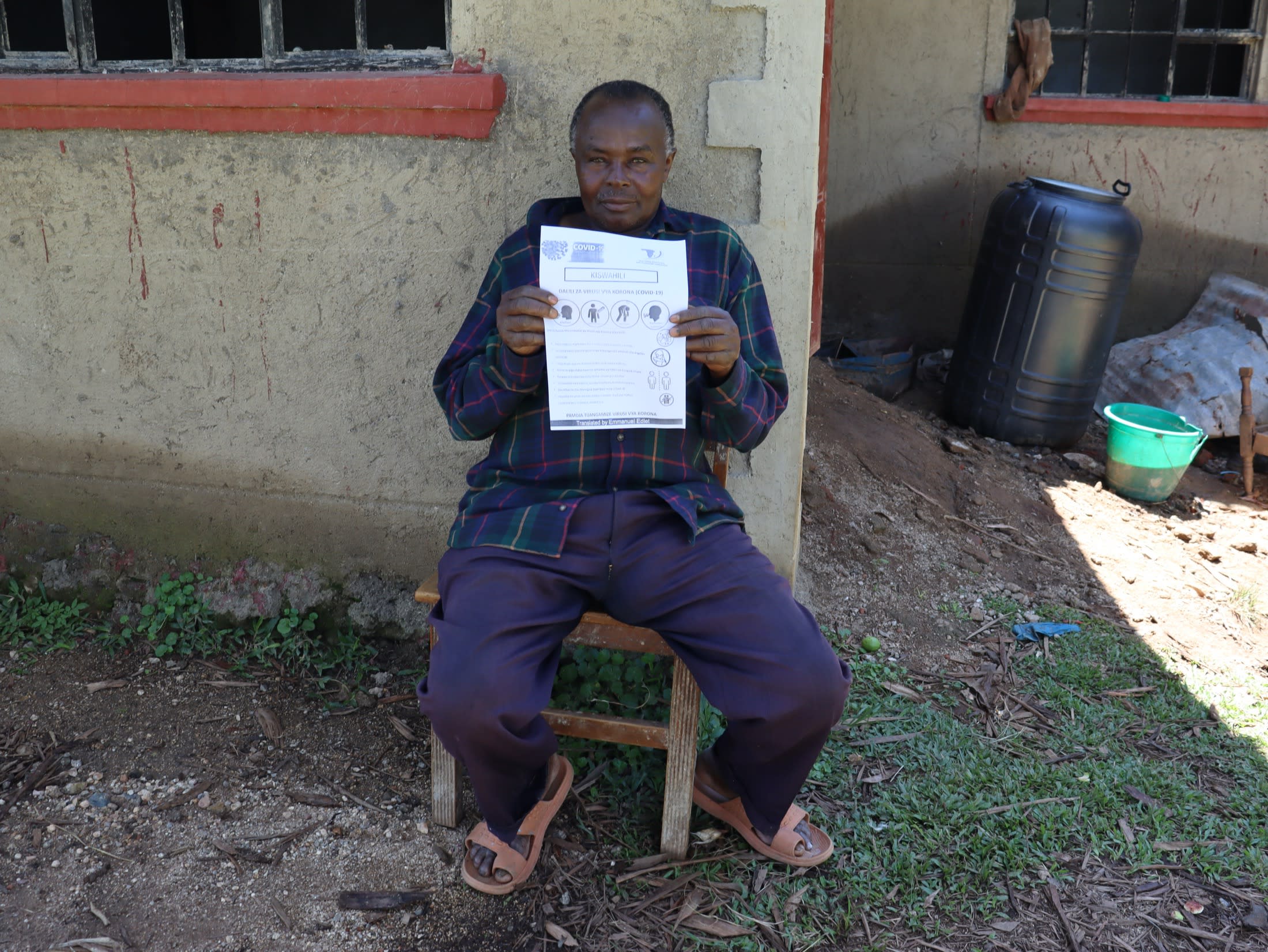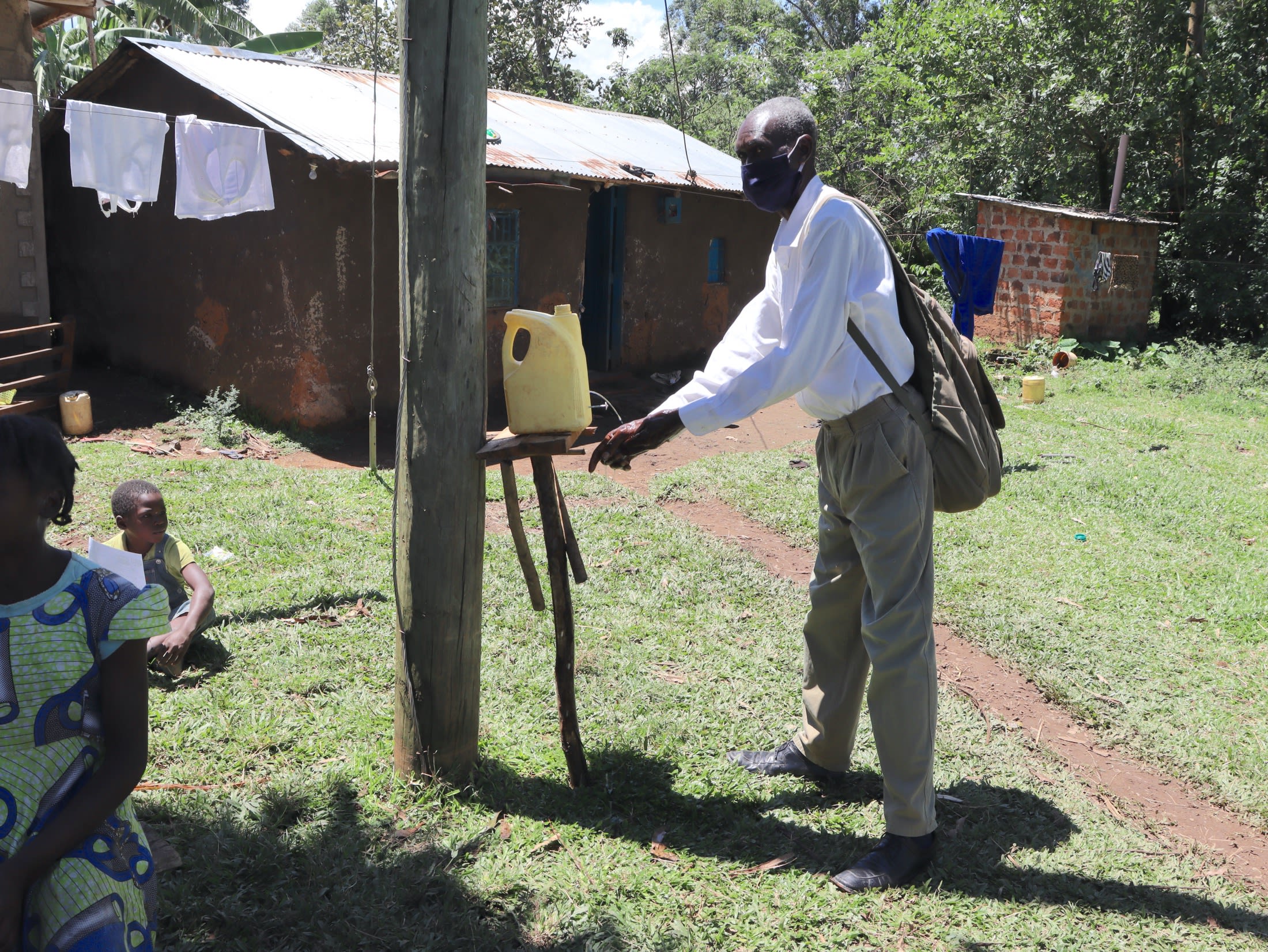A normal day in Muraka Community starts by 6:30am. Parents who have school-going children start the morning by having them wash up and eat breakfast. Once they've finished, women take their jerrycans to fetch water, joined by a few willing men.
After they have finished and have enough water for use, they move on to farm work. Most farmers here specialize in maize and beans. Farming has really helped people of this community, with parents being able to afford the school fees for their children.
Water
Around 40 different households rely on Peter Itevete Spring to meet all of their water needs. The spring is entirely open to pollution, especially when rainwater washes things down the banks and into the water.
The dirty water that people bring home is making them sick with illnesses like typhoid and cholera.
"During rainfall, the overflow covers the spring. And due to farming near the spring, the water is dirty and unsafe. It is really affecting the community members," James Magada shared.
Sanitation
Quite a few homes still don't have pit latrines. Some people are sharing, while others are relieving themselves in the bushes. This is endangering the entire community because of the way waste is spread so easily. A few of the same households have set up a water container to rinse their hands after using their latrine, but there's no soap.
Around half of the households don't even have simple tools like dish racks and clotheslines to dry their belongings safely off the ground.
Here's what we're going to do about it:
Training
Community members will attend hygiene and sanitation training for at least two days. This training will ensure participants have the knowledge they need about healthy practices and their importance. The facilitator plans to use PHAST (Participatory Hygiene and Sanitation Transformation), CLTS (Community-Led Total Sanitation), ABCD (Asset-Based Community Development), group discussions, handouts, and demonstrations at the spring. One of the most important topics we plan to cover is the handling, storage, and treatment of water. Having a clean water source will be extremely helpful, but it is useless if water gets contaminated by the time it’s consumed. Hand-washing will also be a big topic.
Training will also result in the formation of a committee that will oversee operations and maintenance at the spring. They will enforce proper behavior around the spring and delegate tasks that will help preserve the site, such as building a fence and digging proper drainage. The fence will keep out destructive animals, and the drainage will keep the area’s mosquito population at a minimum.
Sanitation Platforms
On the final day of training, participants will select five families that should benefit from new latrine floors.
Training will also inform the community and selected families on what they need to contribute to make this project a success. They must mobilize locally available materials, such as bricks, clean sand, hardcore, and ballast. The five families chosen for sanitation platforms must prepare by sinking a pit for the sanitation platforms to be placed over. All community members must work together to make sure that accommodations and food are always provided for the work teams.
Spring Protection
Protecting the spring will ensure that the water is safe, adequate and secure. Construction will keep surface runoff and other contaminants out of the water. With the community’s high involvement in the process, there should be a good sense of responsibility and ownership for the new clean water source.
Fetching water is predominantly a female role, done by both women and young girls. Protecting the spring and offering training and support will therefore help empower the female members of the community by giving them more time and efforts to engage and invest in income-generating activities.
This project is a part of our shared program with Western Water And Sanitation Forum (WEWASAFO). Our team is pleased to provide the reports for this project (formatted and edited for readability) thanks to the hard work of our friends in Kenya.

 Protected Spring
Protected Spring
 Rehabilitation Project
Rehabilitation Project































